The Alcaobaça Monastery
- Address: Mosteiro de Alcobaça
- Tags:
 What to see Alcobaça,
Alcobaça,
Portugal
What to see Alcobaça,
Alcobaça,
Portugal
- Telephone: +351 262 505
- Website: www.mosteiroalcobaca.pt
Another of the Wonders of Portugal
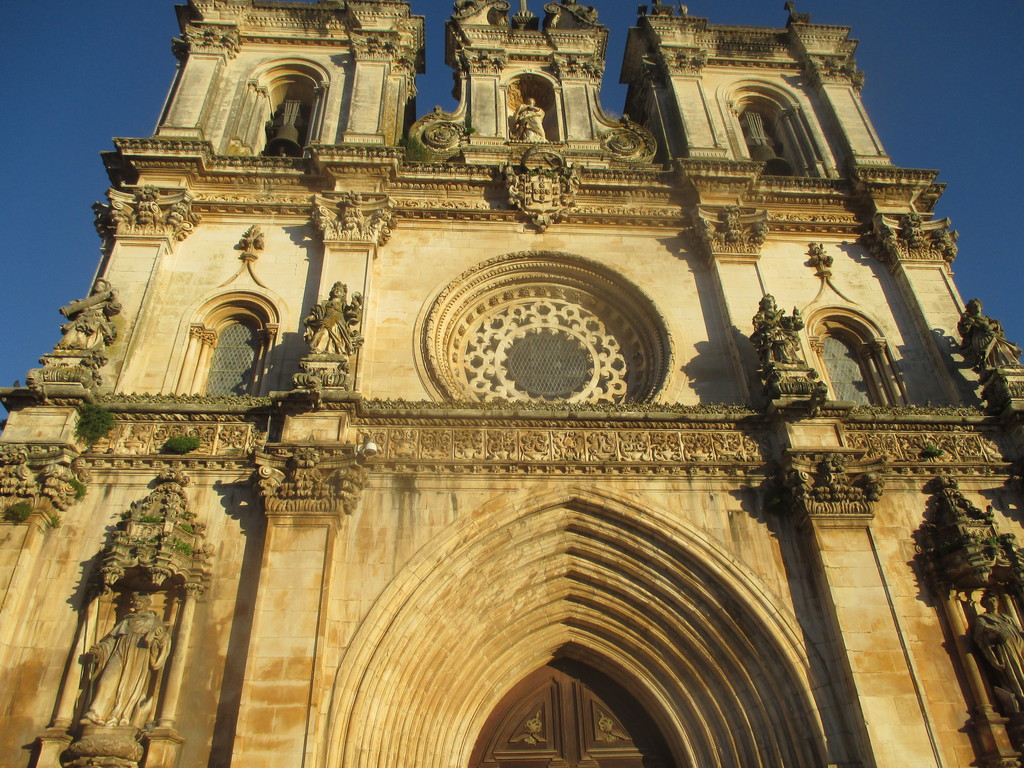
Now that there are only a few days left before the Erasmus Competition ends, although we should leave some other corners, we should at least name the Seven Wonders of Portugal.
I don't think it's necessary to name them again but, to explain: although some of my criteria indicate that some places are nothing out of this world, like the case of the Guimarães Castle, for others, there is no possible discussion because they are so magnificent, like the Alcobaça Monastery.
How to get there?
Alcobaça has a small population of around 15, 000 inhabitants, although its district is home to 50, 000. The city is located quite to the south, closer to Lisbon than Leiria, in the region of Estremadura (not to be confused with the Spanish region of Extremadura).
For this reason, the best way to get here is by car, if you leave from Leiria or Coimbra. It is possible, and definitely advisable, to go by bus if you are on Erasmus in Lisbon, but if you are in Leiria and Coimbra, like I said before, it would be better for you to go by car.
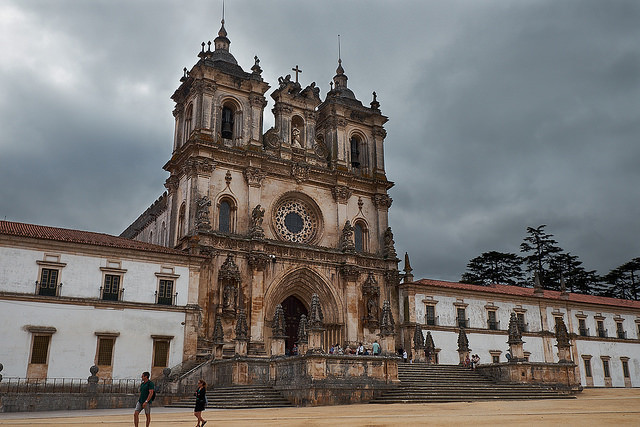
A little bit of history...
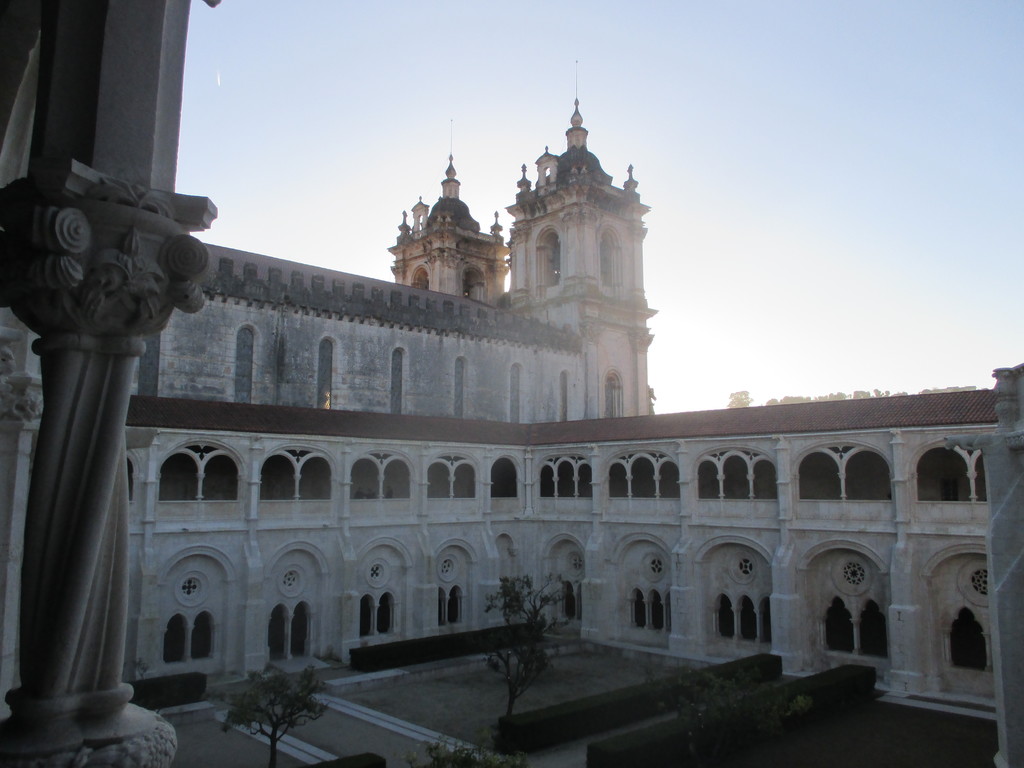
There are two histories; the traditional and the real. The traditional story tells us that King Afonso Henriques promised that if he were to conquer Santarém, he would build a monastery. On completing the conquest, he had to fulfil this promise and he constructed the Monastery of Alcobaça.
Meanwhile, the real story explains the construction of the monastery as a focus point so that there could be a fast and efficient re-population for the Portuguese Reconquest continuing towards the south, as Afonso Henriques managed to conquer a vast amount of uninhabited terrain towards the border.
The construction of the monastery started in 1178 with Saint Bernardo de Claraval in charge, the abbot of the Order of Cistercians from France. This order was based upon a working life and not accumulating wealth.
The building was constructed on quite fertile land between the rivers Alcôa and Baça, who gave their names to the monastery and the municipality.
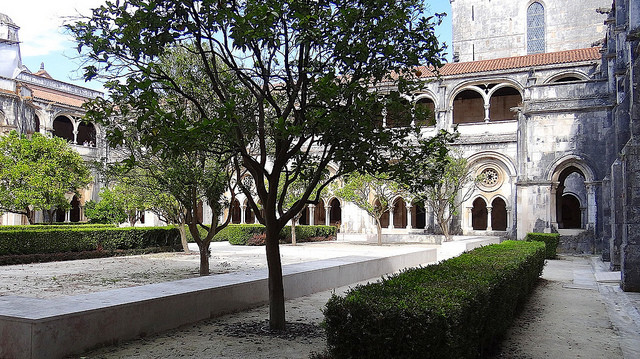
The monastery was occupied from 1223 when the main parts of the monastery building were constructed. Between 1308 and 1311, the Cloister of Silence was built. After this, in 1355, the tombs of Don Pedro and Doña Inés de Castro (of whom we will talk about later) were built.
In the 16th century between 1505 and 1519, the architect João de Castilho, who was named various times to have participated in the Convent of Christ and the Jerónimos Monastery, built an upper gallery in the Cloister of Silence.
In the 17th and 18th centuries there were also other reforms, like the church's façade, or the construction of the kitchen. On extinguishing the religious orders in 1834, the place was used in many different ways. Due to it being so large, each part had two different uses. From telegraphs, passing through schools, private housing, municipal offices...
For this reason, along with the Baltalha Monastery or the Jerónimos Monastery, the most interesting aspect is the building's architecture since there is hardly any furniture left from the period.
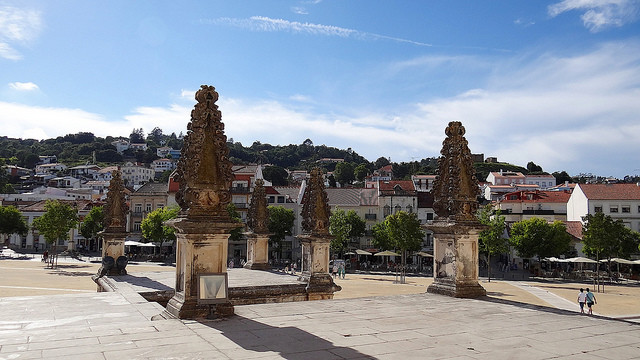
As well as the history of Pedro I and Doña Inés de Castro. It is the typical love story that one will find in Portugal. Inês de Castro accompanied her cousin, Constanza, who was married to the son of Afonso IV.
But they fell in love, making it difficult when Constanza and Pedro I got married. Although, luckily for the pair, Constanza ended up dying during childbirth.
From this moment on, they lived together and married in secret. However, Afonso IV, on seeing that their relationship could lead to a war with Castille (Inês was from Galicia, belonging to the Castillian Reign), decided to kill her and some other nobles in the Santa Clara de Coímbra Monastery. And, being in Coimbra, an observer sees many places with the name of Inês de Castro.
A couple of years later, Afonso IV died and King Pedro I ended up taking revenge on the nobles that helped to kill Doña Inês. Legend says that he took her out of his grave and had the nobles kiss her hand as a symbol of loyalty. Currently, both lovers "sleep" in the Monastery of Alcobaça.
Putting this love story to one side, the Monastery has the honour of being the first gothic building constructed in Portugal, hence its great importance.
The Alcobaça Monastery

Knowing all of this, we will visit the Alcobaça Monastery, but first let's look at its façade. The façade was finished in 1725, according to a project by Fraile João Turriano. Next to the façade, the exhibition gallery can be found, home to different temporary contemporary art exhibitions and photography. I didn't have time to visit because I was in a group.
Continuing on, let's enter the Alcobaça Church. The truth is that this church is gigantic and beautiful, with a simple architectural style. Constructed in Latin cross formation, the place stands out because there is the tomb of Pedro I and Inês de Castro in each one of these parts.
The figure of Pedro I is supported by three angel ensembles and he has a dog at his feet. One part can be found to have been given from the Napoleonic wars. You can see a Wheel of Fortune with images of the life of the lovers on it, it is something unique in European contemporary sculpture.
In terms of the tomb of Doña Inês de Castro, it is also supported by six angels and, at her feet, you can see images about the Day of Final Judgement. Meanwhile, there are scenes of the life of Jesus represented on either side.
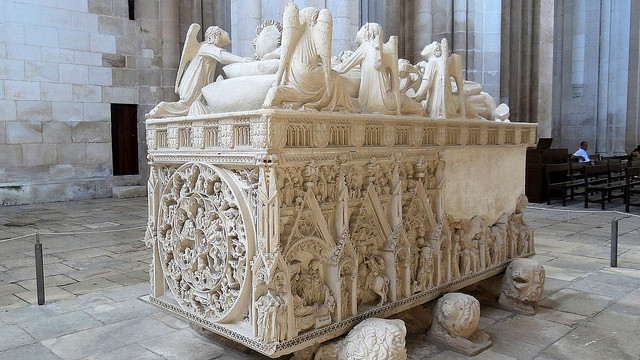
After seeing the church, we will pass to see the three cloisters than form the Monastery of Alcobaça. The first one is the most beautiful - "The Cloister of Silence" or Dom Dinís for reforming in the time of the Portuguese king. The name "Silence" is due to the vow of silence taken by the monks. This is the true centre of the monastery, around which the other parts are distributed.
It is the largest Portuguese Gothic cloister, made by architects Domingo Domingues and the "Master" Diogo. .
One of the most beautiful rooms that you can access within the cloister is the "Refeitório" - the equivalent of the dining room. With great dimensions, it is formed by three naves with five sections divided into columns with botanical decoration.
From the dining room, we wil go into the kitchen, one of the most interesting parts. It was one of the last reforms of the monastery in the 18th century, due to the needs of the monastic community. The prettiest aspects are the different fountains and the tiles that adorn the place.
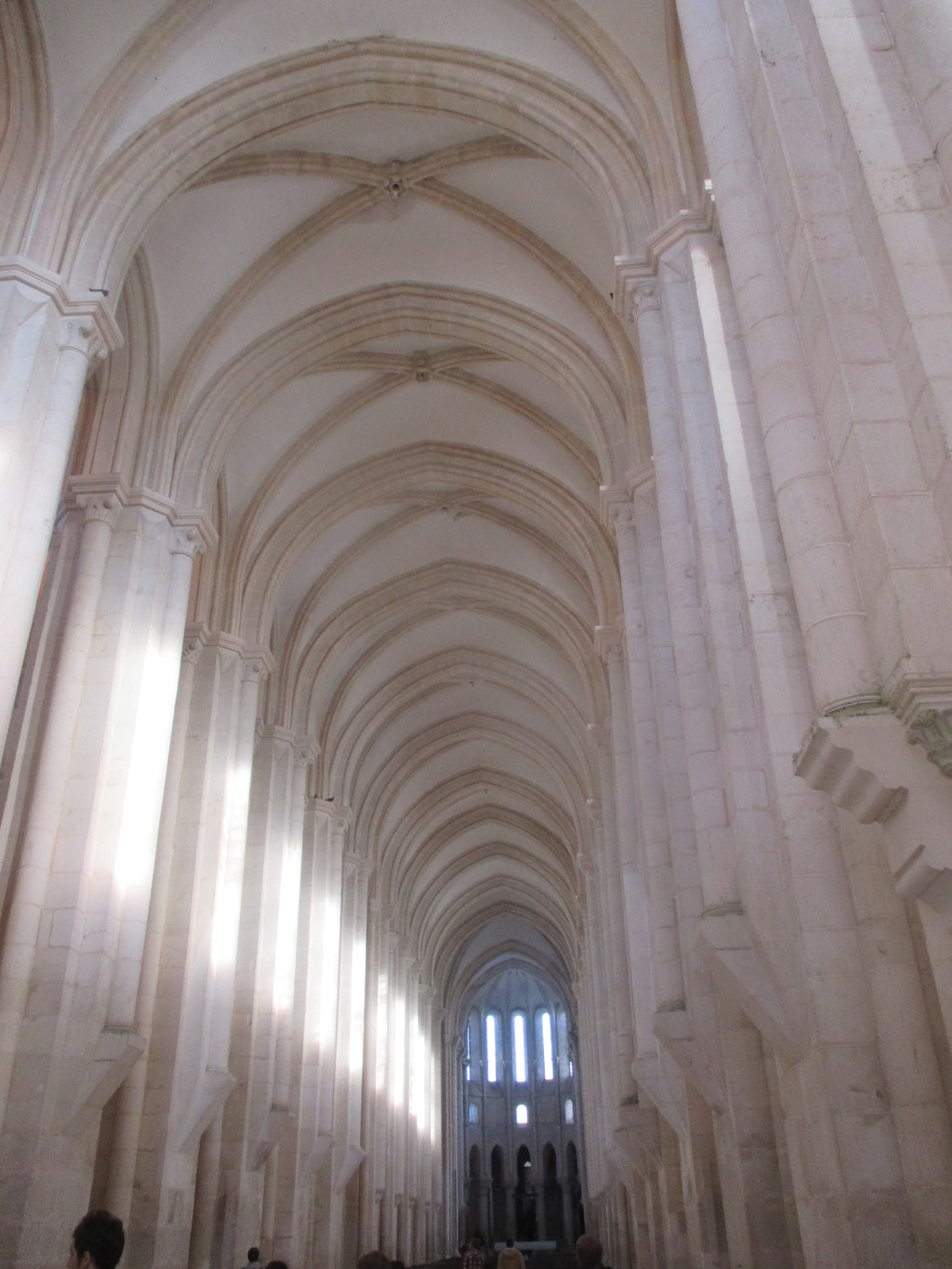
We will access it by some stairs that will take us towards the upper level where we will go on a small trip around the Cloister of Silence until we arrive in the next room. The Chapter House was one of the most important spaces in the Monastery, which also existed in the Convent of Christ and the Batalha Monastery.
Here they decided about the most relevant topics in the life of the Monastery. Due to the Gothic construction, it has an almost square floor. The Rooms of the Monks also deserves a small visit.
To continue, let's go into the Cardinal's Cloister, or the "Claustro dos Noviços". Named as such due to the Cardinal Infante Dom Henrique, he was responsible for the addition of this cloister, which is attributed to Miguel de Arruda and was built at the end of the 16th century.
This cloister was for the apprentices of the cloister, the "noviços" lodged in the Room of Two Monks.
Lastly, that leaves us with two locations, on one side we have the Rachadoiro Cloister, which was made due to the lack of space in the library. We will only see this cloister from above, from one of the rooms overlooking the Claustro do Cardeal.
Finally we have the Sacristia Manuelina which was reconstructed after the 1755 earthquake that struck Lisbon, but also arrived at Estremadura. Based in the same 16th century, commissioned by Manuel I and whose Manuelino entrance hall is attributed to João de Castilho . And with this we have finished our visit to the Monastery of Alcobaça.
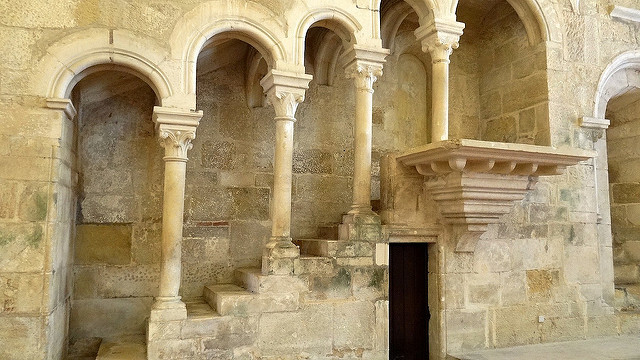
I should also mention the price and opening times. The price is 6 euros, but with a 50% discount if you show your student card It is expensive but it is worth a visit.
In terms of the opening times, it is open from 9:00 until 17:00 during the winter between October and March. From April to September is it prolonged to 19:00. In general, it is a shorter timetable to that in Spain, but they open one hour earlier than most other monuments, and therefore it can be a good idea to visit this one first.
In conclusion, it seems like an interesting place to me, but that being said, I liked the Batalha Monastery more which I almost saw at the same time. Anyway, I would totally recommend you visiting it and even more so with it being one of the Seven Wonders of Portugal.
Photo gallery
Content available in other languages
- Español: Otra de las maravillas de Portugal
- Italiano: Un'altra delle meraviglie del Portogallo
- Italiano: Un'altra delle meraviglie del Portogallo
Rate and comment about this place!
Do you know The Alcaobaça Monastery? Share your opinion about this place.























